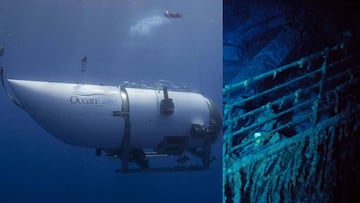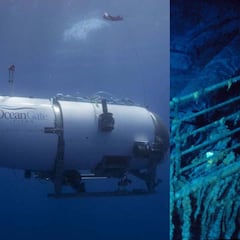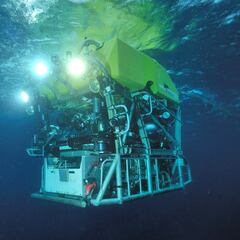The three reasons why rescuing the Titan submersible is almost impossible
At a depth of 12,400 feet where the Titanic is located, oxygen becomes toxic. At 23,000 pounds, the weight of the Titan is an added problem for its rescue.

The missing submersible, the Titan, is in an extremely difficult situation. First, only a handful of vessels are capable of withstanding the pressures of sea depths more than 12,400 feet where the Titanic is located. Second, there are very few historical examples of rescue missions in similar circumstances. Those responsible for the recovery operation want to be prepared for any eventuality, so they consider all possible hypotheses, whether they have positive or fatal outcomes.
Difficult to pinpoint the location
One of the biggest unknowns is where exactly the submersible is located. The vast underwater expanse to be explored exponentially multiplies the difficulty of the Coast Guard’s work. There were reports that there was a constant signal coming from the depths from a point close to the wreck, but the US Coast Guard has dismissed the sounds as normal underwater noises.
The scenario in which the five passengers would likely be recovered alive is if the submersible’s emergency systems had been activated. The vessel is programmed to automatically return to the surface if it detects a major incident in the watercraft. This would greatly facilitate the task of locating it, as it would be visible from a plane or one of the ships deployed. But, the more time passes, the more unlikely this scenario becomes.
READ ALSO: The search for OceanGate’s Titan continues as time is running out
When the Titan submersible lost contact with its mothership, the surface crew reportedly did not notify the Coast Guard of the missing vessel for nearly eight hours.https://t.co/xaBgkEMBdP
— The Daily Beast (@thedailybeast) June 21, 2023
Impossible pressure at great depths
Another possibility would be that the Titan had reached the bottom of the sea and, once there, it had suffered a breakdown or it had gotten caught in something, which would mean that it has not been able to return to the surface. Should this have happened, the possibility of saving the five lives can be almost completely ruled out. Even if the submersible could be recovered with time and effort, the process would take too long to complete, and the crew are already close to running out of oxygen.
Nor can it be ruled out that a catastrophic failure in the capsule could have caused its sudden destruction by giving in to the great pressure existing at a depth of more than 12,000 feet. While this would mean that all the passengers would have died almost immediately, it also at least rules out the harrowing scenario of them slowly running out of oxygen. In any case, the authorities seem not to have thrown in the towel, and continue to keep alive the remote possibility that all their efforts could end for the best.
READ ALSO: What’s the difference between a submersible and a submarine?
No vessel equipped for such a deep rescue
Related stories
However, there are other logistical impediments that make a rescue practically impossible, even if the Titan were accurately located. To begin with, the vehicle available to the United States to carry out underwater rescues can only be submerged to 1,800 feet, so the only possibility would be to do everything with unmanned ships.
But even this presents insurmountable obstacles. Machines of this type can only lift about two tons, and the Titan weighs more than 10. On top of this, at the depth where the Titanic is found, oxygen becomes toxic, requiring a special gas.

